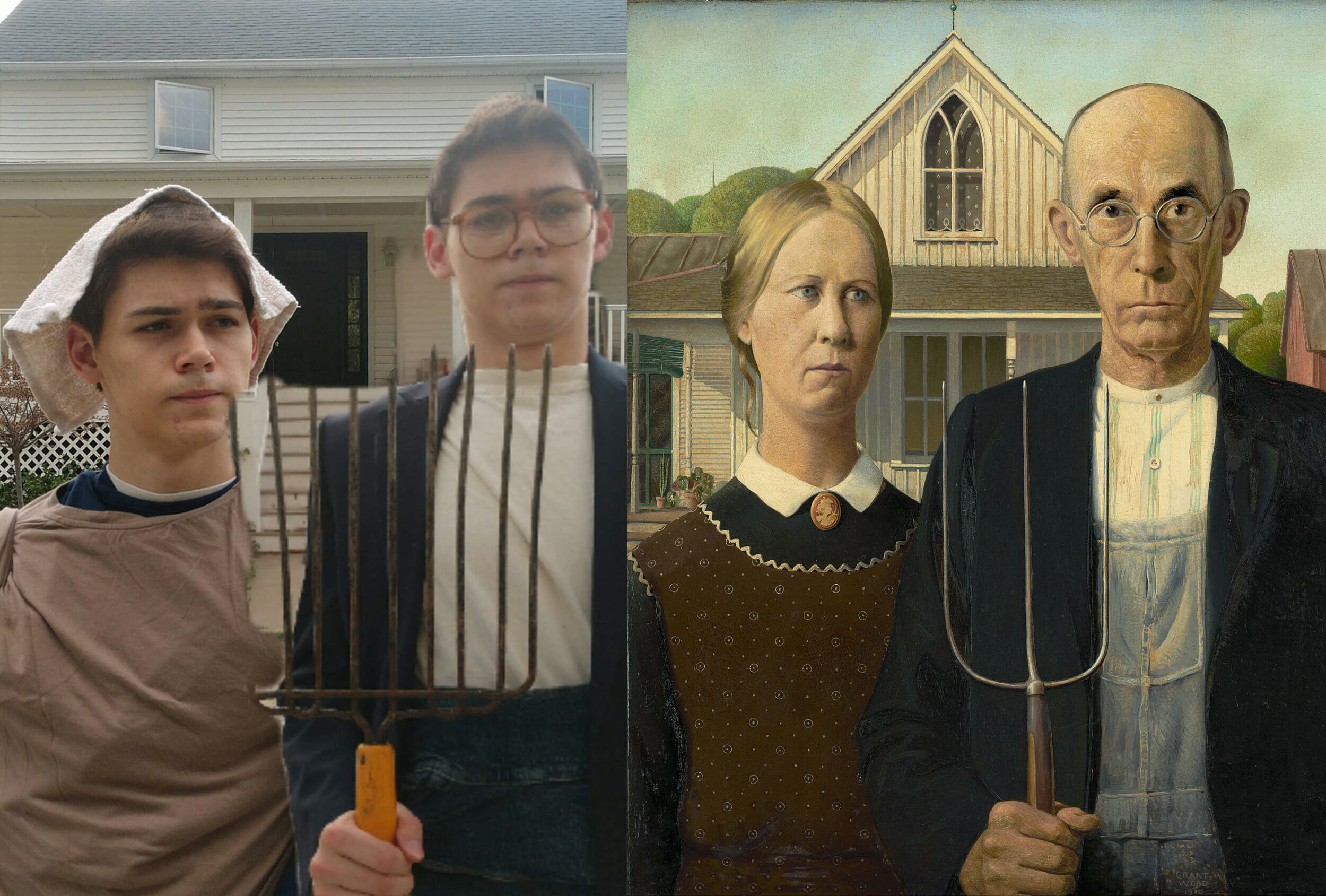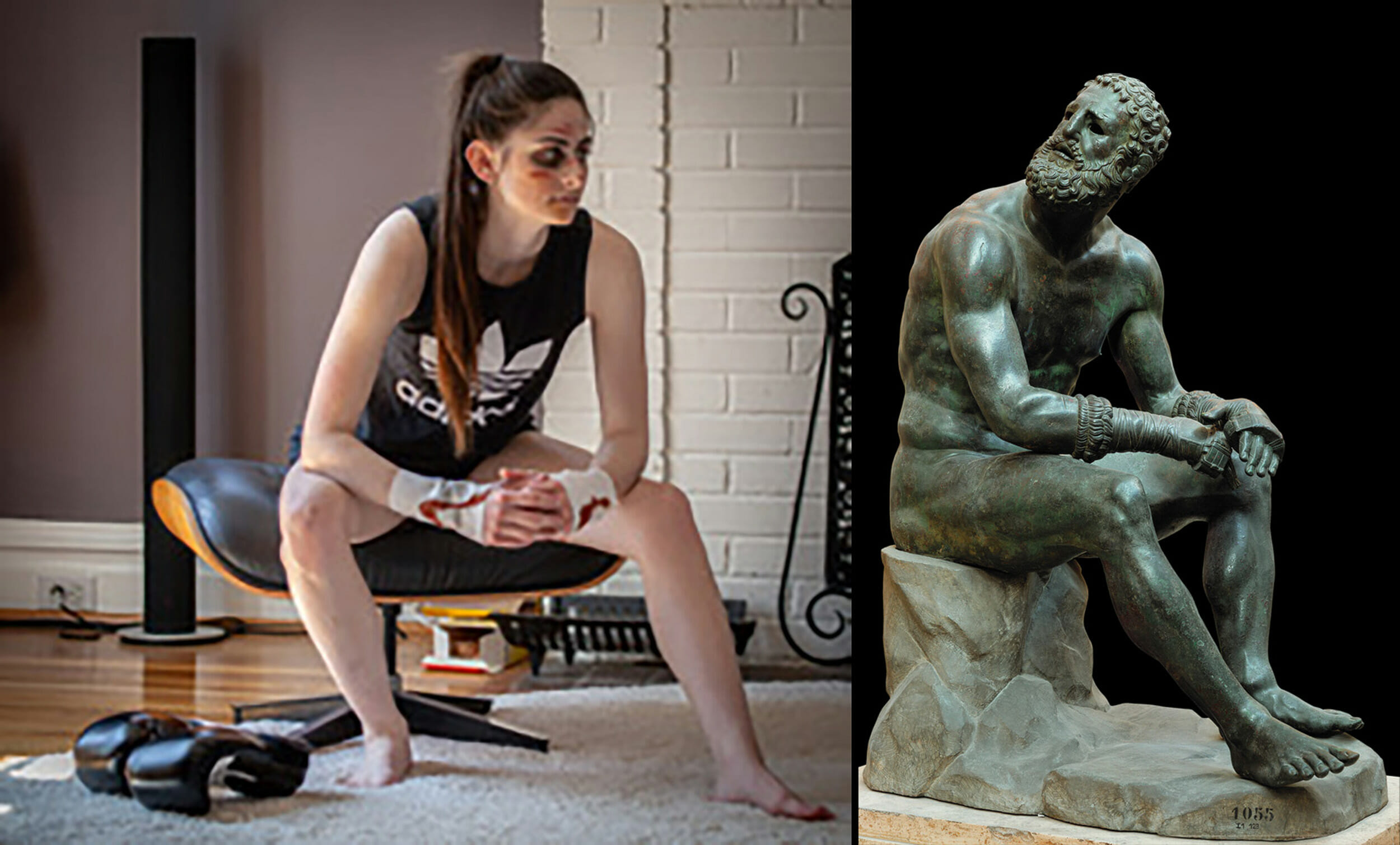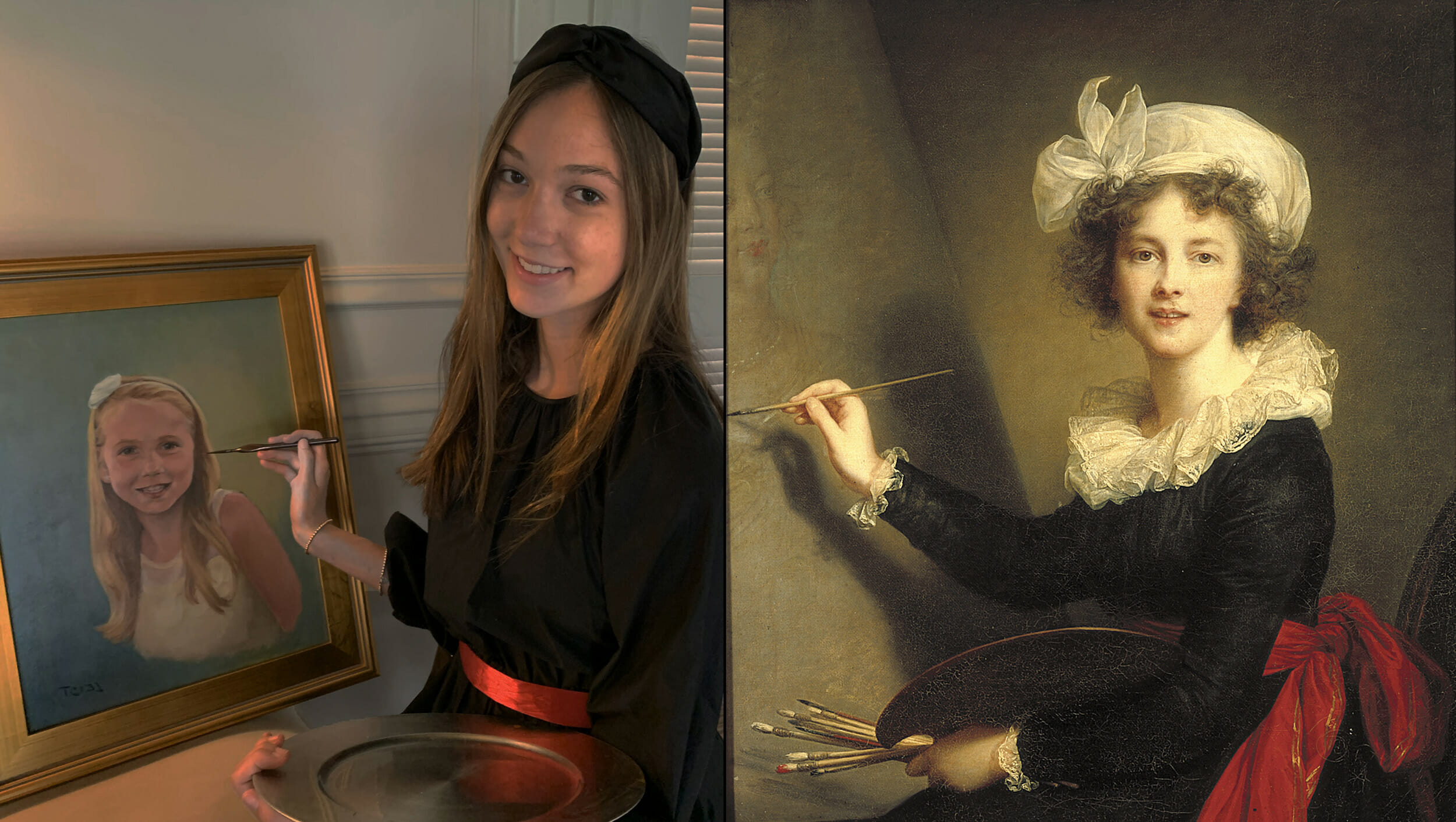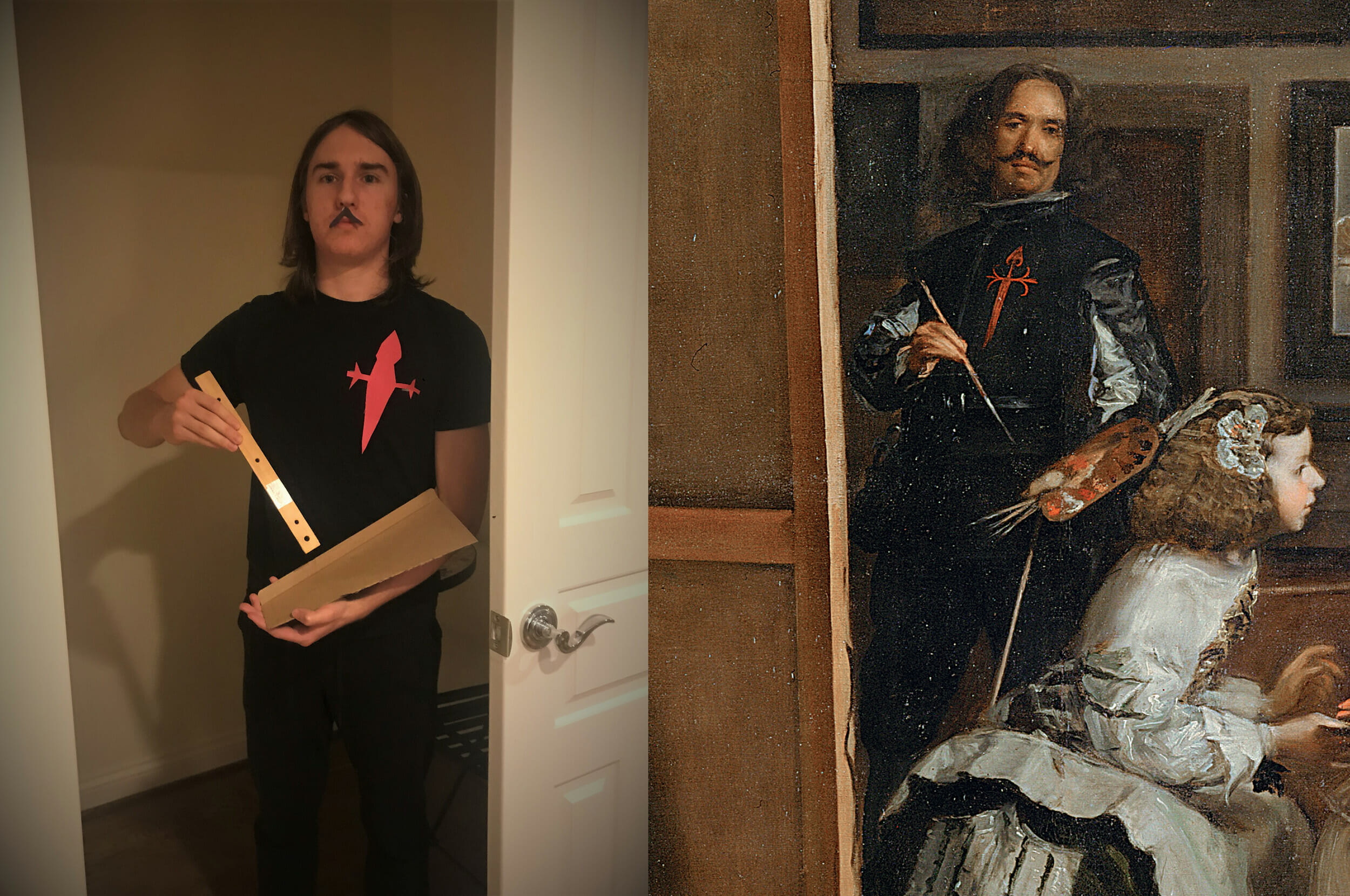AP Art History students have been having too much fun with an assignment similar to the social media challenge issued by the Getty Museum, #MuseumChallenge. Fine and Performing Arts Teacher Patrick Huber challenged his students to take one of the artworks studied this year and re-create it at home using only materials already available to them.
Huber was impressed with the results. “This is a new project for this ‘new normal.’ The students responded with a variety of works. Some focused on details, and others used Photoshop to create entire works.” The students virtually presented their work in class, and they shared what they learned about the art by doing this challenge. Some discovered interesting details they hadn’t noticed before, and some conjectured the feelings and attitudes of the subjects of the paintings while reenacting them.
When asked if the students enjoyed this project, Huber replied with a smile, “There was much laughter and fellowship during the presentations, both things that are important in these times.”
Hannah Bockert ’20 said, “I really enjoyed this activity as it provided insight into the extreme detail and work that goes into creating a piece of art. I believe there is so much we can learn about different cultures, how they function and what they valued through their art. Currently, we are exploring African art after the 1800s which is one of the last content areas we will be covering before the end of the year. The best part of the class, besides the art, is getting to hear how my classmates and Mr. Huber decode the deeper meaning from the works; with different viewpoints come different interpretations which, in my opinion, is the best way to understand the intentions of the artist. While most of my other classes have changed the structure of the class, Art History has remained somewhat the same. I appreciate the effort to limit the differences between in person and virtual learning in this class. Although I wish my class could be together in person again, I always look forward to seeing them virtually and miss them all.”
“My favorite part of class is just putting everything we learn within a broader intellectual context,” shared Morgan Niven `20. “When you’ve taken the kind of history and science classes MICDS provides, it’s always interesting to contextualize the ideas you are currently learning with the historical and scientific background you already possess.”
Huber offers some insight about how AP Art History is adapting to the distance learning environment in general. “The AP Art History class had to cancel the spring activities that normally provide a capstone experience to the class, such as the scavenger hunt at the St. Louis Art Museum and the three-day ‘art boot camp’ trip to Chicago. On the positive side, we are at a point in the curriculum where students are assigned works that they present to the rest of the class, and that has kept our online sessions interactive and engaging. It’s the one class I teach where all of the students keep their microphones on for the whole time!”
Enjoy some of the thoughtful and interesting recreations from our AP Art History students below.





